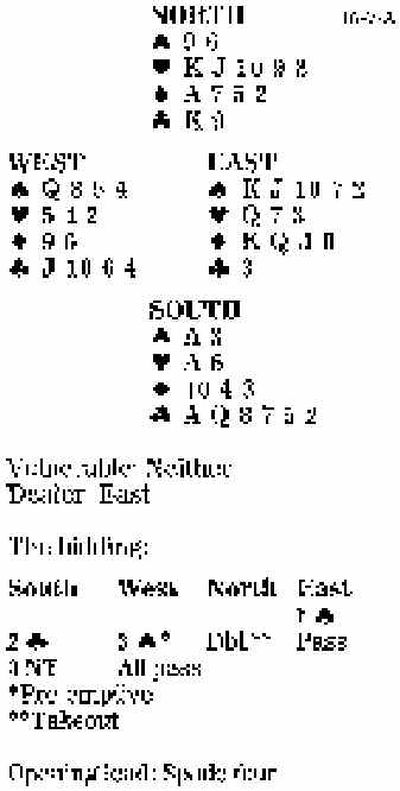Bridge

Today’s declarer could have succeeded in three no-trump if he had left himself a second chance in case the first line of attack failed.
Two points about the auction, though. Jump-raising partner in competition is often played as pre-emptive nowadays – strong raises start with a cue-bid. And North’s double of three spades is best used as takeout, not penalty. Which kind of hand is North more likely to hold after this start to the auction?
West led a low spade to the king and ace, and South saw he had 10 top tricks if the clubs broke 3-2, with all 13 tricks available if the heart queen came down doubleton.
However, a club to dummy’s king and a club return saw East show out. Declarer now wanted to finesse East for the heart queen, since once West was marked with the spade queen and club jack, East was likely to hold the rest of the points. But with only one outside entry to dummy, he could no longer pick up East’s guarded heart queen.
A change in the order of play would have opened both doors. By cashing a top club from hand and then leading low to dummy’s king, declarer can switch his attention to hearts when clubs fail to behave. He runs the heart jack, then cashes the heart ace and the other top club before re-entering dummy with the diamond ace. Ten tricks roll in when the heart king brings down the queen.
Bid with the aces
South holds:
| •9 6 | |
| •K J 10 9 8 | |
| •A 7 5 2 | |
| •K 9 |
| South | West | North | East |
| 1 • | 1 • | Dbl. | Pass |
| 2 • | Pass | 2 • | Pass |
| ? |
Answer: Rebid three diamonds, albeit in fear and trembling. Partner’s cue-bid shows a strong hand, asking you to define your shape or to show a spade stop. With nothing else to show, rebidding your diamonds (where partner has an implied fit) is probably the least dangerous lie and does not promise extra shape.